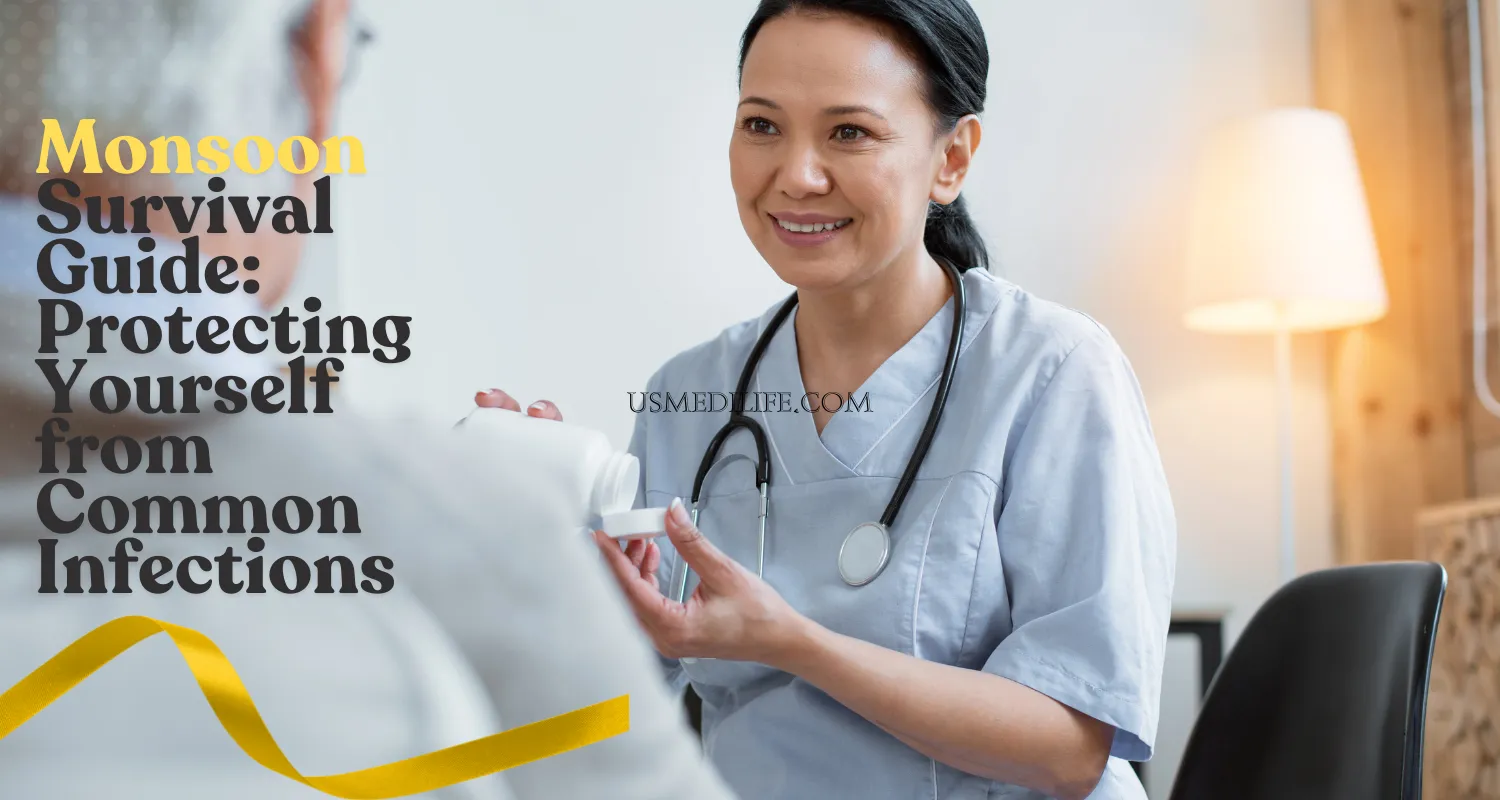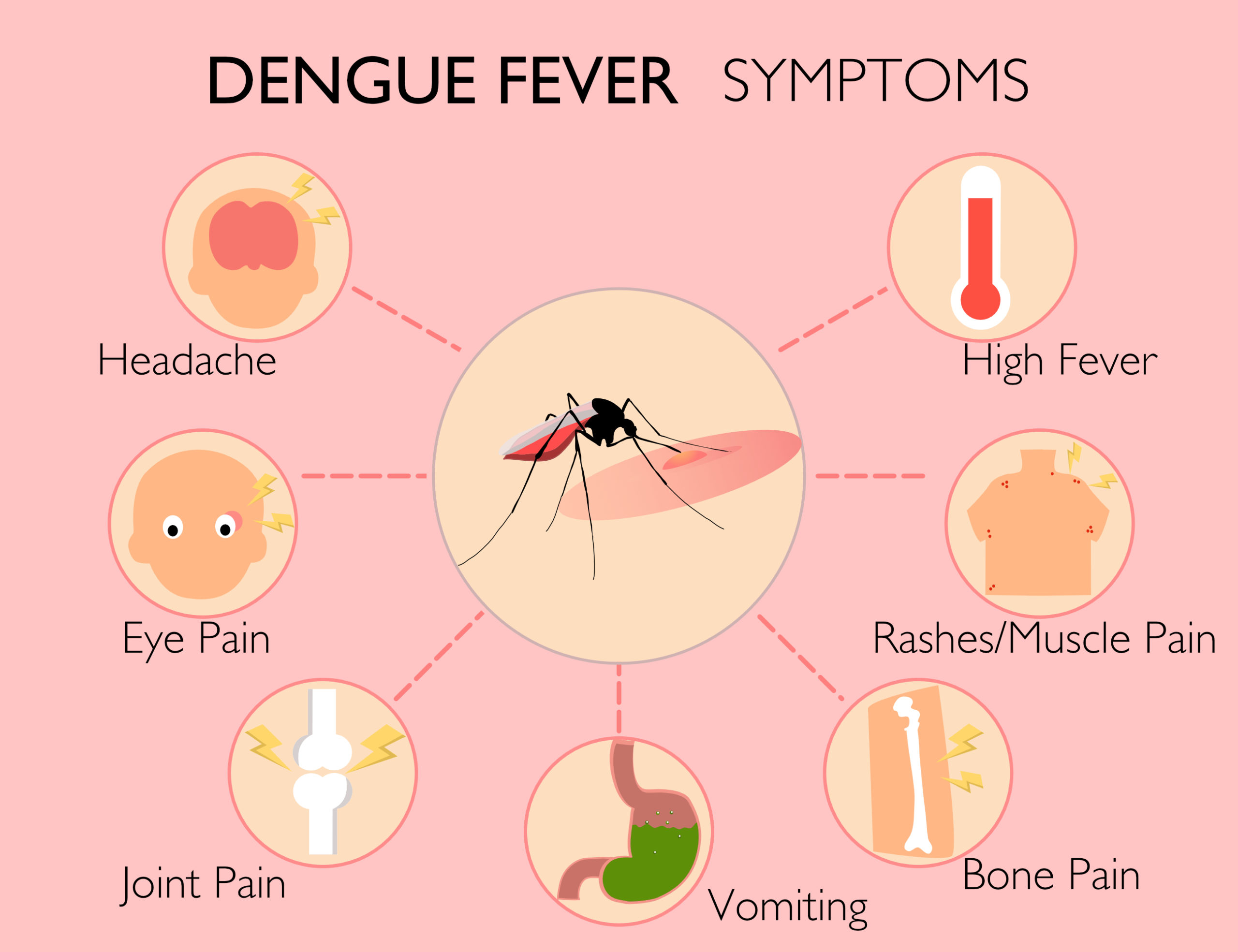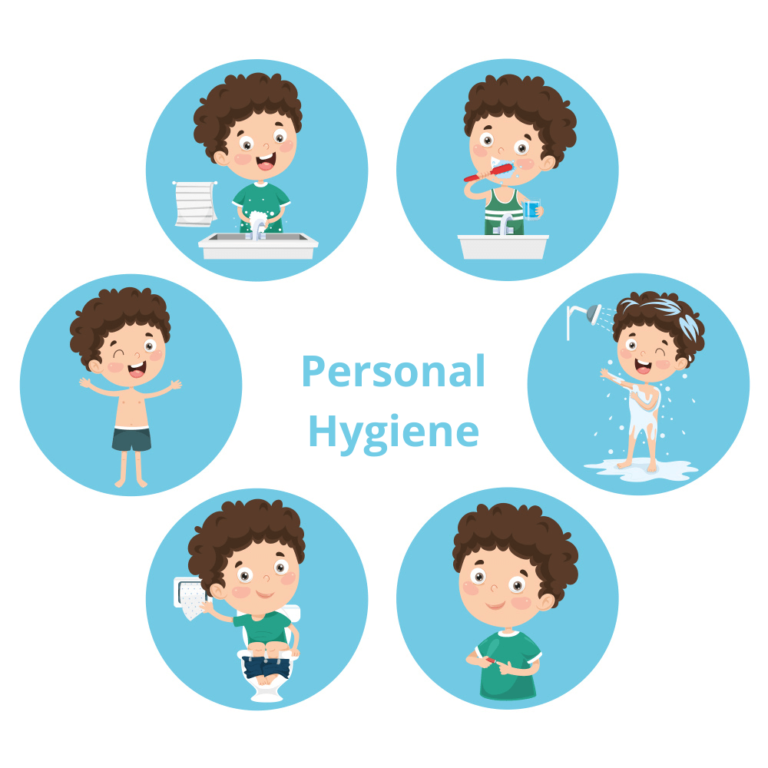
Dr. Ashwini
19-06-2025
Monsoon Survival Guide: Protecting Yourself from Common Infections
The monsoon season brings refreshing rains and cooler temperatures, offering relief from summer heat. However, it also increases the risk of infections due to humidity, stagnant water, and fluctuating temperatures. This guide provides practical steps to help you stay healthy and protect yourself from common monsoon-related infections.
Key Points
-
Common Infections: Dengue, malaria, chikungunya, viral fevers, typhoid, and gastroenteritis are prevalent during the monsoon.
-
Prevention Focus: Eliminating mosquito breeding sites, maintaining hygiene, and ensuring safe food and water are critical.
-
Proactive Measures: Boosting immunity and early symptom monitoring can reduce infection risks.
-
No Controversy: These prevention strategies are widely recommended by health experts with no significant debate.

Why Monsoon Infections Are a Concern
The rainy season creates ideal conditions for pathogens to thrive. Mosquitoes breed in stagnant water, spreading diseases like dengue and malaria, while contaminated water and food can lead to typhoid and gastroenteritis. Research suggests that practicing basic hygiene and preventive measures significantly lowers infection risks.
Simple Steps to Stay Safe
-
Avoid Mosquito Bites: Use repellents, nets, and full-sleeved clothing to prevent dengue, malaria, and chikungunya.
-
Ensure Clean Water and Food: Drink boiled or purified water and avoid street food to reduce the risk of waterborne diseases.
-
Maintain Hygiene: Wash hands frequently and keep skin dry to prevent fungal infections.
-
Boost Immunity: Eat a balanced diet rich in fruits and vegetables to strengthen your body’s defenses.
-
Seek Early Treatment: Consult a doctor if you experience persistent fever, joint pain, or diarrhea.
When to Seek Help
If you notice symptoms like high fever, severe joint pain, or persistent vomiting, seek medical attention promptly. Early diagnosis can prevent complications, especially for diseases like dengue or leptospirosis.
Comprehensive Monsoon Survival Guide: Protecting Yourself from Common Infections
India's monsoon season, which lasts from June to September, brings cooler temperatures and lush greenery to the landscape. Fluctuations create a breeding ground for pathogens, leading to a surge in infections. From mosquito-borne diseases like dengue and malaria to waterborne illnesses such as typhoid and gastroenteritis, the rainy season poses significant health risks. This comprehensive guide outlines the common monsoon infections, their symptoms, and actionable prevention strategies to help you enjoy the season safely.
Understanding Monsoon-Related Infections
The monsoon environment fosters the spread of various infections. Below is a detailed overview of the most common diseases, their symptoms, and transmission modes:
|
Disease |
Symptoms |
Transmission |
|---|---|---|
|
Dengue Fever |
High fever, rashes, headache, joint pain, low platelet count |
Aedes mosquito bites |
|
Malaria |
High fever, chills, sweating, body aches, anemia |
Anopheles mosquito bites |
|
Chikungunya |
Acute joint pain, high fever, fatigue, chills |
Aedes mosquito bites |
|
Viral Fevers |
Fever, fatigue, dizziness, muscle pain, sore throat |
Airborne or contact with infected individuals |
|
Leptospirosis |
Fever, chills, muscle pain, headache, jaundice |
Contact with water contaminated by infected animals |
|
Typhoid |
Prolonged fever, weakness, abdominal pain, headaches, vomiting |
Contaminated food or water |
|
Gastroenteritis |
Diarrhea, vomiting, nausea, abdominal pain, fever |
Contaminated food or water |
|
Hepatitis A |
Jaundice, fatigue, abdominal pain, nausea |
Contaminated food or water |
|
Cold and Flu |
Runny nose, sore throat, cough, body aches, fever |
Airborne or contact with infected individuals |
|
Fungal Infections |
Itchy skin, rashes, especially in skin folds or between toes |
Damp conditions, poor hygiene |
These infections can range from mild to life-threatening if not addressed promptly. For instance, dengue can progress to dengue hemorrhagic fever, and untreated leptospirosis may lead to organ damage. Understanding these risks is the first step toward effective prevention.
Top Prevention Strategies
A multifaceted strategy that incorporates environmental management, personal hygiene, and lifestyle modifications is required to prevent monsoon infections. Here are detailed strategies to stay infection-free:
1. Prevent Mosquito Breeding
Mosquitoes are the primary vectors for dengue, malaria, and chikungunya. Reducing their population is critical:
-
Eliminate Stagnant Water: Empty and clean containers like flower pots, buckets, and coolers weekly to prevent water accumulation. Stagnant water is a breeding ground for mosquitoes, as noted in health advisories.
-
Use Mosquito Nets and Repellents: Sleep under insecticide-treated nets and apply repellents containing DEET or picaridin, especially during dawn and dusk when mosquitoes are most active.
-
Install Window Screens: Fit windows and doors with mesh screens to block mosquito entry.
-
Wear Protective Clothing: Opt for full-sleeved shirts and long pants, particularly in mosquito-prone areas. Light-colored clothing is less attractive to mosquitoes.
-
Community Efforts: Coordinate with local authorities for fogging or spraying in high-risk areas, as recommended by sources like Odomos Protect.
2. Maintain Personal Hygiene
Hygiene is a cornerstone of infection prevention:
-
Frequent Hand Washing: Wash hands with soap and water before eating, after using the restroom, or after touching potentially contaminated surfaces. This reduces the risk of viral and bacterial infections.
-
Shower After Rain Exposure: Rinse off thoroughly after getting wet to remove dirt and germs, which can lead to skin infections.
-
Keep Skin Dry: Dry skin thoroughly, especially between toes and in skin folds, to prevent fungal infections, which thrive in damp conditions (Fortis Healthcare).
-
Trim Nails: Short nails minimize the risk of harboring germs and fungal growth.

3. Ensure Safe Drinking Water and Food
Waterborne diseases are a major concern during the monsoon:
-
Drink Boiled or Purified Water: Always consume boiled or filtered water, even for brushing teeth, to prevent typhoid, cholera, and hepatitis A (Srisri Holistic).
-
Avoid Street Food: Opt for freshly cooked, home-prepared meals to minimize the risk of contamination. Street food is often exposed to unhygienic conditions.
-
Wash Produce Thoroughly: Rinse fruits and vegetables under running water to remove contaminants.
-
Cook Food Properly: Ensure all food, especially meats and seafood, is cooked thoroughly to kill pathogens.
-
Store Food Safely: Avoid consuming leftovers stored for too long, as humidity can promote bacterial growth.
4. Boost Your Immunity
A robust immune system can fend off infections:
-
Balanced Diet: Include Vitamin C-rich fruits (e.g., oranges, guavas), leafy greens, and protein sources to strengthen immunity, as advised by Indus Health Plus.
-
Stay Hydrated: Drink 8–10 glasses of clean water daily to flush out toxins.
-
Immunity Boosters: Incorporate ginger, turmeric, and honey into your diet for their anti-inflammatory properties.
-
Regular Exercise: Engage in indoor activities like yoga or stretching to maintain physical health and boost immunity.
5. Avoid Contact with Contaminated Water
Flooded areas pose risks for leptospirosis and other infections:
-
Avoid Flooded Areas: Stay away from waterlogged streets to prevent contact with contaminated water (Srisri Holistic).
-
Wear Protective Footwear: Use waterproof boots or shoes if you must navigate flooded areas.
-
Cover Wounds: Protect open cuts or bruises with waterproof bandages to prevent bacterial entry.
6. Stay Vaccinated
Vaccinations offer additional protection:
-
Typhoid and Hepatitis A Vaccines: Ensure these are up to date, especially in areas with poor sanitation.
-
Influenza Vaccine: A seasonal flu shot can reduce the risk of respiratory infections, as recommended by Max Hospital.

7. Early Detection and Treatment
Prompt action can prevent complications:
-
Monitor Symptoms: Be vigilant for signs like high fever, joint pain, rashes, or persistent diarrhea. Seek medical help immediately if symptoms persist.
-
Health Check-ups: Routine blood tests, such as a Complete Blood Picture (CBP), can aid early diagnosis, as suggested by Tenet Diagnostics.
-
Stock Medications: Keep basic medicines for fever or allergies at home, but consult a doctor before use.
Additional Precautions for Families
-
Protect Children: Use child-safe mosquito repellents and dress them in full-sleeved clothing to minimize exposure.
-
Educate Household Members: Teach everyone about hygiene practices and the dangers of stagnant water.
-
Sanitize Your Home: Regularly clean surfaces with disinfectants to reduce germ buildup.
When to Seek Medical Help
Despite precautions, infections may occur. Seek immediate medical attention if you experience:
-
High fever lasting over two days
-
Severe joint pain or rashes
-
Persistent vomiting or diarrhea
-
Signs of dehydration (e.g., dizziness, reduced urination)
Early intervention is critical for diseases like dengue and leptospirosis, which can escalate rapidly. For instance, a 2025 report noted a significant rise in chikungunya cases in Mumbai, highlighting the need for prompt action (Mid Day).
Enjoy the Monsoon Safely
The monsoon season is a time to revel in nature’s beauty, but it requires vigilance to stay healthy. By eliminating mosquito breeding sites, maintaining hygiene, ensuring safe food and water, boosting immunity, and monitoring symptoms, you can significantly reduce your risk of infections. Stay proactive, stay informed, and let the rains bring joy, not illness, to your life.



